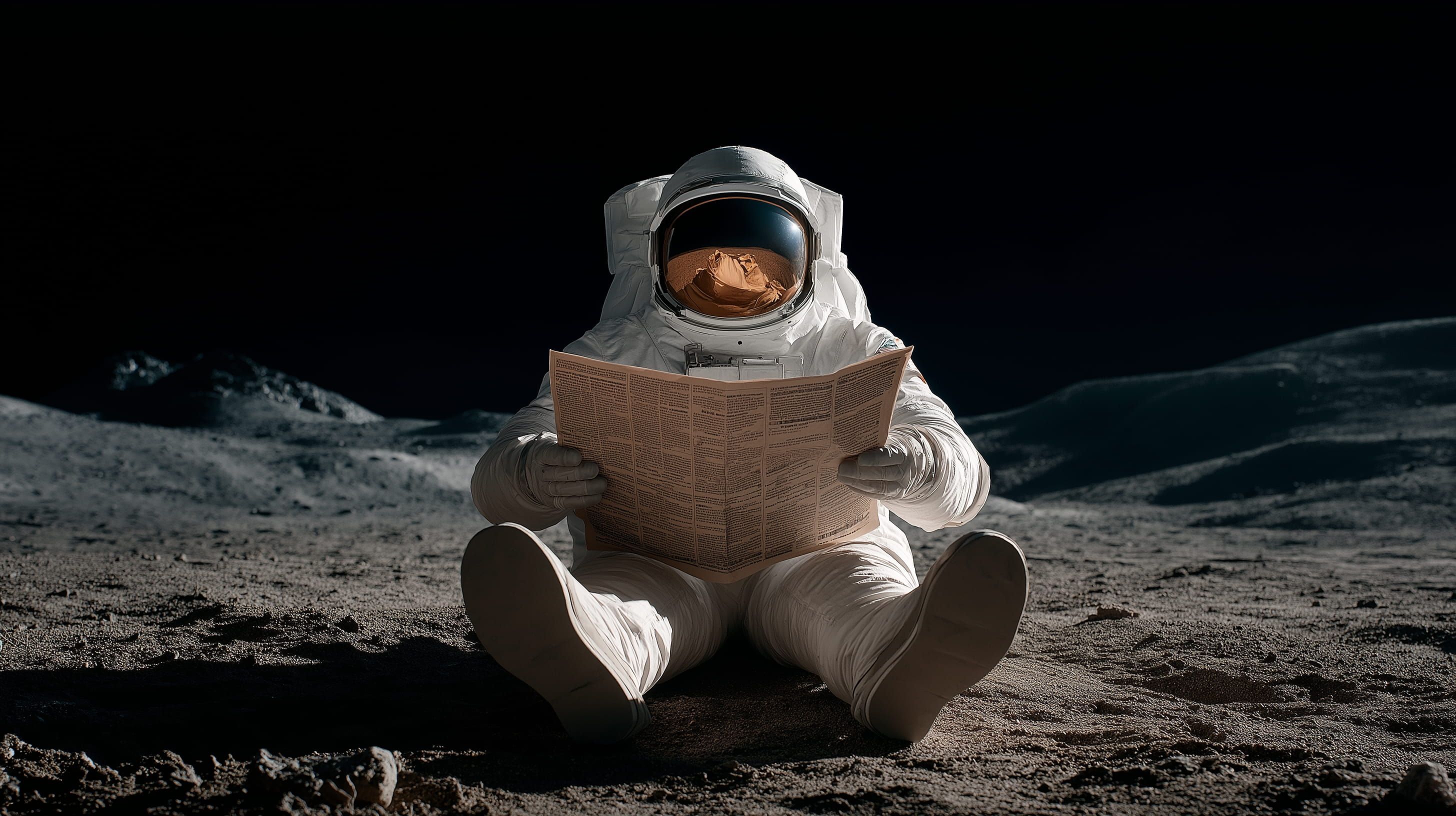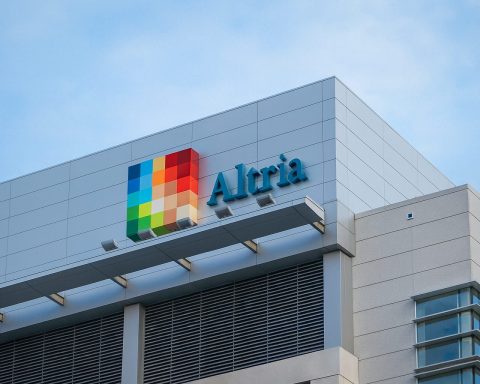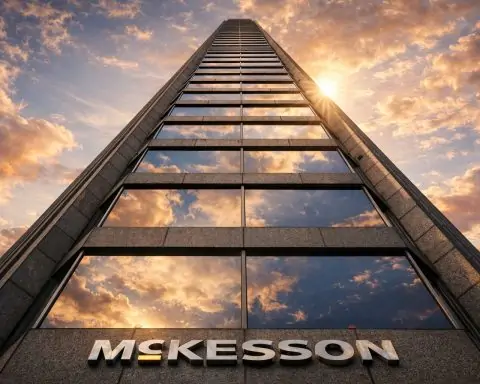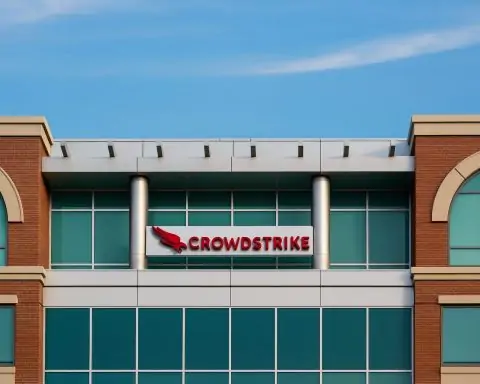- NASA’s Crew-10 returned four astronauts—Anne McClain, Nichole Ayers, Takuya Onishi, and Kirill Peskov—from nearly five months aboard the ISS, as SpaceX’s Crew Dragon Endurance splashed down off San Diego at 11:33 a.m. EDT on Aug. 9, marking NASA’s first Pacific Ocean crew recovery in 50 years.
- Crew-11 arrived at the ISS a week before Crew-10’s splashdown, restoring the station to seven crew and continuing the U.S.–Russian seat-swap arrangement through 2027, with every SpaceX Crew Dragon carrying a Russian cosmonaut and every Soyuz carrying an American.
- Roscosmos chief Dmitry Bakanov visited Florida for the Crew-11 launch, the first face-to-face meeting of the U.S. and Russian space agency heads in eight years.
- Captain Jim Lovell, commander of Apollo 8 and Apollo 13, died on Aug. 7 at age 97, with NASA Acting Administrator Sean Duffy praising his character and leadership.
- SpaceX’s Falcon 9 launch attempt to deploy 24 Amazon Kuiper satellites was scrubbed four days in a row (Aug. 7–10) due to weather and technical issues, with the next attempt retargeted for Aug. 11.
- ULA’s Vulcan rocket is slated for its first National Security Space Launch, USSF-106, on Aug. 12, injecting two military satellites into geosynchronous orbit and aiming for nine additional launches by year’s end and about two per month by early 2026.
- Rocket Lab achieved a 100% success rate in 2025 with the Aug. 5 Electron launch of the QPS-SAR-12, “Kushinada-I,” for iQPS, marking its 11th launch of 2025 and foreshadowing the Neutron debut by late 2025.
- Blue Origin resumed human spaceflight with NS-34 on Aug. 3 from West Texas, carrying six space tourists including Justin Sun, marking Blue Origin’s 14th human spaceflight and its first flight in nearly two years.
- Europe’s Ariane 6 program advanced as MetOp-SG-A1 weather satellite was sealed inside the payload fairing at the Spaceport in Kourou in preparation for an inaugural flight intended to deliver climate-monitoring payloads and test the booster.
- ISRO’s post-NISAR momentum includes the July 30 launch of NISAR and plans to launch a 6,500-kg American-built communications satellite on an Indian rocket within months, alongside a plan to triple India’s domestic satellite constellation to over 150 satellites within 2–3 years.
NASA Crew Splashdown and ISS Updates (United States)
Historic Pacific Landing: Four astronauts from NASA’s Crew-10 mission returned to Earth on Saturday after nearly five months aboard the ISS. SpaceX’s Crew Dragon Endurance splashed down off the coast of San Diego at 11:33 a.m. EDT on Aug. 9 [1], marking NASA’s first Pacific Ocean crew recovery in 50 years [2] [3]. “Welcome home,” SpaceX Mission Control radioed as parachutes deployed [4] [5]. The returning crew – NASA astronauts Anne McClain and Nichole Ayers, JAXA’s Takuya Onishi, and Roscosmos cosmonaut Kirill Peskov – were all smiles upon hatch opening on the recovery ship [6]. Before leaving ISS, Commander McClain reflected on “some tumultuous times on Earth” and hoped their mission would remind people “of what we can do when we work together, when we explore together” [7] [8]. She quipped that once home she looked forward to “doing nothing for a couple of days,” while her crewmates craved hot showers and burgers [9]. The Crew-10 splashdown followed a smooth handover in orbit: Crew-11 had arrived at the ISS a week prior, ensuring continuous staffing [10].
ISS Cooperation & Seat Swaps: With Crew-11 now on board, the ISS is back to its full seven-member international crew [11]. Notably, this rotation continues the U.S.-Russian “seat swap” arrangement: each SpaceX Crew Dragon carries a Russian cosmonaut and each Soyuz carries an American, to ensure at least one of each aboard at all times [12]. In fact, NASA and Roscosmos quietly extended these seat-swap agreements through 2027 during recent talks [13]. Roscosmos chief Dmitry Bakanov visited Florida to attend the Crew-11 launch – the first face-to-face meeting of the U.S. and Russian space agency heads in eight years [14]. Despite geopolitical strains, NASA ISS Deputy Manager Dina Contella said “we did have a good exchange between the two agencies and our cooperation [is] continuing on ISS” [15]. This underscores that ISS partnership remains strong, as both sides prepare for the station’s final years. (The next ISS resupply mission, SpaceX CRS-33 later this month, will even test a new U.S. reboost module to help take pressure off Russia’s propulsion tasks [16].)
Remembering an Apollo Legend: The space community also mourned the loss of Captain Jim Lovell, the famed Apollo 8 and Apollo 13 commander, who passed away on Aug. 7 at age 97 [17]. Acting NASA Administrator Sean Duffy hailed Lovell’s “character and steadfast courage” in guiding NASA through triumph and near-disaster [18]. Lovell’s calm leadership during the Apollo 13 crisis turned a potential tragedy into a “successful failure” that taught NASA invaluable lessons [19] [20]. As one of the first astronauts to orbit the Moon and a veteran of four spaceflights, Lovell’s legacy continues to inspire Artemis-era explorers [21] [22].
Rocket Launch Drama and Satellite Constellations (Commercial Space)
SpaceX vs. the Weather: An attempted SpaceX Falcon 9 launch of 24 satellites for Amazon’s Project Kuiper internet constellation was scrubbed four days in a row this weekend [23]. After technical glitches on Aug. 7–8, the KF-02 mission faced bad weather in the booster recovery zone on Aug. 9 and 10, forcing last-minute holds despite 75% favorable launch forecasts [24] [25]. “We have no-go conditions on recovery weather… standing down,” the launch director announced seconds before Sunday’s planned liftoff [26]. The next attempt was re-targeted for Monday morning, Aug. 11 [27]. This Falcon 9 carries Amazon’s second batch of Kuiper broadband satellites, crucial to Amazon’s challenge to SpaceX’s Starlink network. (Meanwhile, SpaceX also rescheduled a separate Starlink launch from Vandenberg that was slated for Aug. 8 [28].) The repeated scrubs highlight the tight launch cadence and caution as SpaceX juggles customer missions and its own mega-constellation.
ULA’s Vulcan Ramps Up: Traditional launch provider United Launch Alliance (ULA) is preparing a major milestone: the new Vulcan rocket’s first National Security Space Launch for the U.S. Space Force, set for Aug. 12 [29]. ULA CEO Tory Bruno touted this inaugural Vulcan mission (USSF-106) as “what we designed this rocket to do,” noting it will directly inject two military satellites to geosynchronous orbit – one of ULA’s longest, most challenging missions to date [30]. After overcoming delays (including a 2024 engine anomaly and payload holdups [31]), ULA is now ambitiously aiming for nine more launches by year’s end, using a mix of new Vulcan vehicles and its few remaining Atlas V rockets [32]. Bruno said ULA has a “stockpile” of launchers ready and is targeting two launches per month by early 2026 [33] [34]. Many of those flights will loft Amazon’s Kuiper satellites (ULA has seven Atlas V missions booked for Kuiper) and Boeing’s CST-100 Starliner crew capsules in 2025 [35]. If successful, this rapid cadence would significantly boost ULA’s competitiveness in the evolving launch market.
Rocket Lab’s 100% Success:Rocket Lab also notched a win, launching a Japanese radar imaging satellite on Aug. 5 NZT. Its Electron booster delivered the QPS-SAR-12 “Kushinada-I” spacecraft for iQPS into orbit from New Zealand [36]. Codenamed “The Harvest Goddess Thrives,” this mission was Rocket Lab’s 11th launch of 2025, maintaining a 100% success rate for the year [37]. The company highlighted this as part of a record cadence and confirmed it is on track to debut its larger Neutron rocket by late 2025 [38] [39]. (Rocket Lab executives say the Neutron’s schedule is on a “green light” path with zero margin for delays in order to fly by year’s end [40].) With its reliable small-launcher record and the medium-class Neutron in development, Rocket Lab is solidifying its role as a global leader in dedicated smallsat launches [41].
Blue Origin Back in Action: After a long hiatus, Blue Origin resumed human spaceflights earlier in the month. On Aug. 3, Jeff Bezos’ company successfully launched New Shepard flight NS-34, carrying six space tourists – including crypto billionaire Justin Sun – to the edge of space and back [42] [43]. Liftoff from West Texas occurred at 8:43 a.m. ET, and the crew enjoyed a few minutes of weightlessness before a safe parachute landing [44]. “It was an honor to see so many nations represented on our flight today,” Blue Origin VP Phil Joyce said post-flight, noting the unifying effect of seeing “our fragile planet” from suborbital space [45] [46]. NS-34 was Blue Origin’s 14th human spaceflight, and the first in nearly two years since an earlier incident grounded the fleet. The diverse crew (from the U.S., Puerto Rico, Turkey, UK, Nepal, and India) means Blue Origin has now flown passengers of 23 different nationalities in its tourism program [47] [48]. With this mission, Blue Origin aims to reinvigorate its suborbital space tourism business while development continues on its orbital New Glenn rocket. (By contrast, competitor Virgin Galactic is in a planned two-year pause, building a next-gen fleet for 2026 after completing its last Unity spaceplane flight in 2024.)
Developments in Europe and Russia
Europe’s Next-Gen Rocket Prep: In Europe, teams are busily preparing the new Ariane 6 heavy-lift rocket for its debut. In early August, engineers at Europe’s Spaceport in Kourou sealed the MetOp-SG-A1 weather satellite inside the Ariane 6 payload fairing, clearing a key hurdle toward launch [49]. MetOp-SG-A1 is an advanced meteorological satellite that will monitor atmospheric ozone, air quality and greenhouse gases with ultra-precise instruments [50]. It’s one of Europe’s “Second Generation” MetOp satellites and will work in tandem with a sister spacecraft launching next year [51]. The upcoming Ariane 6 launch (date to be announced) will not only deliver this crucial climate-monitoring payload, but also serve as a proving ground for Europe’s Ariane 6 booster – Europe’s answer to lower-cost launch competition. The Ariane 6 is intended to be more flexible and cost-efficient than the venerable Ariane 5. ESA officials are eager to demonstrate Ariane 6’s capabilities after delays; as the Space.com report notes, the rocket’s last test-firing occurred back in March, and this inaugural mission will help advance both European launch autonomy and climate science goals [52].
ESA Astronaut Milestone: Europe also celebrated a human spaceflight milestone last month. Sławosz Uznański-Wiśniewski, an ESA project astronaut from Poland, returned to Earth on July 15 as part of the private Axiom-4 mission – marking the first Polish astronaut mission to the ISS [53] [54]. After a two-week stay performing research in orbit, Uznański splashed down with his crewmates and is now undergoing scientific post-flight monitoring in Europe. This successful flight (contracted via Axiom Space) is a point of pride for Poland and highlights ESA’s growing cooperation in commercial missions. (No European astronauts were launched in the Aug 9–10 window, but training and missions continue toward ESA’s 2024–2025 assignments.)
Roscosmos Focuses on ISS & Lunar Plans: In Russia, no major launches occurred during Aug 9–10, but Roscosmos remained in the news through ISS cooperation and future planning. As noted, Roscosmos chief Bakanov’s visit to NASA signaled ongoing partnership despite broader tensions [55]. Behind the scenes, Russia is also preparing for its upcoming Luna-26 and Luna-27 lunar missions in the coming years, following last year’s Luna-25 attempt. Roscosmos has publicly reaffirmed its commitment to the International Lunar Research Station concept with China, even as NASA’s Artemis Accords gain signatories globally. (In late July, Senegal became the latest country to sign the Artemis Accords, joining the U.S.-led framework for peaceful space exploration.) These parallel diplomatic efforts underscore a bifurcated global space policy landscape – yet on the ISS, U.S. and Russian crews continue to work side by side daily. Russian officials also noted they are stockpiling propellant to eventually deorbit the ISS in 2030, coordinating with NASA on end-of-life plans [56]. For now, Roscosmos’ near-term agenda includes routine Soyuz crew rotations (with a swap astronaut from NASA) and progress on the Soyuz GVK uncrewed cargo return vehicle test planned for later this year. (No new Roscosmos-led launches occurred this weekend; the next Russian launch – a military satellite mission – is expected later in August.)
Asian Space Endeavors: China and India
China’s Crewed Moon Lander Test:China took a significant stride toward its goal of landing taikonauts on the Moon by 2030. On Aug. 6, the China Manned Space Agency conducted a successful takeoff and touchdown test of its prototype “Lanyue” lunar lander at a facility in Hebei province [57] [58]. Lanyue (meaning “embracing the Moon”) is a two-person lunar lander being developed for China’s first crewed lunar mission. In the recent test – the first time China has ever trialed an off-Earth landing and ascent procedure with a crew-rated spacecraft – the lander was dropped and then boosted back up to simulate a lunar surface landing and liftoff [59]. Chinese engineers are rigorously validating the lander’s performance under various scenarios, from cushioning systems to engine relight in low gravity. “For our manned space missions, we must ensure that astronauts land on the lunar surface very comfortably and smoothly,” explained Huang Zhen of CASC, highlighting the lander’s four legs designed for extra shock absorption [60] [61]. He noted every kilogram is optimized: “Every bit of weight has to play a role… we have employed every possible method to minimize weight” while preserving safety [62]. This key test of Lanyue is a major milestone for China’s crewed lunar program [63]. It comes on the heels of other progress, including a pad abort test of China’s next-gen crew capsule and the ongoing Tianwen-2 asteroid sample mission. Together, these steps show China intensifying its Moon race efforts, with officials confident they’ll put “footprints on lunar soil” before 2030 [64] [65].
ISRO’s Ambitious Leap After NISAR:India’s space program (ISRO) is riding high after the successful July 30 launch of NISAR, the joint NASA-ISRO Earth observation satellite. The GSLV-Mark II F16 rocket precisely placed NISAR – the world’s most expensive Earth-imaging satellite – into orbit, earning praise from NASA for the launch precision [66] [67]. Hot on the heels of NISAR, ISRO is poised for an even more striking feat: launching a 6,500-kg American-built communications satellite on an Indian rocket in the next couple of months [68] [69]. ISRO Chairman V. Narayanan highlighted this upcoming launch in a speech on Sunday (Aug. 10) in Chennai, noting the poetic full-circle of history – in 1963 the U.S. donated India’s first tiny sounding rocket, and now India will launch one of the U.S.’s largest satellites on an Indian vehicle [70] [71]. “What a significant growth it is,” Narayanan remarked, framing it as a symbol of how far India’s program has come [72]. He also revealed grand plans: tripling India’s domestic satellite constellation (currently 56 satellites) within 2–3 years, ramping up to over 150 satellites in orbit [73]. On human spaceflight, ISRO is pressing ahead with the Gaganyaan program to send Indians to orbit, and even envisions building an Indian space station by 2035 [74]. By 2040, Narayanan predicts India will “match all developed countries” in full-spectrum space capabilities [75]. These bold ambitions follow ISRO’s recent triumphs like Chandrayaan-3’s Moon landing (the first ever at the lunar south pole) and the Aditya-L1 solar observatory. (No ISRO launches took place on Aug 9–10, but a PSLV mission carrying an Earth-mapping satellite is slated in the coming weeks.) The flurry of activity underscores India’s emergence as a major space player, from commercial launch services to exploration.
Science and Tech Breakthroughs
Satellites Fighting Wildfire Smoke: As climate disasters mount, scientists announced a breakthrough in satellite-based air quality monitoring. A new method now enables mapping wildfire smoke plumes in three dimensions using satellite data, improving forecasts of which smoke is a local hazard [76] [77]. Previously, satellites tracked smoke spread only in 2D, without altitude info [78]. But starting this wildfire season, researchers from U.S. universities and agencies have demonstrated a technique to determine smoke plume height and density. This means forecasters can tell if a smoke layer is high aloft (less harmful) or near the ground where people breathe it [79]. The ability to pinpoint neighborhood-level smoke exposure in real time could revolutionize air quality alerts [80]. The project’s lead scientist noted that after two record-breaking fire seasons (2023–2025) that choked cities in hazardous haze [81] [82], this 3D satellite view is arriving just in time. The method combines data from multiple Earth-observing satellites to derive plume heights, and is being evaluated by the EPA for integration into public warning systems. It’s a prime example of how satellite technology is tackling real-world problems, turning vast datasets into actionable information for public health.
Full Moon and Comet Delight: This weekend wasn’t all serious – skywatchers were treated to a spectacular Sturgeon Moon on Aug. 9. The full moon, dubbed the Sturgeon Moon, rose bright and golden, and photos flooded in from around the world [83]. (August’s full moon got its name from indigenous fishing traditions and will be the last “supermoon” of the year.) Meanwhile, astronomers using the Hubble Space Telescope revealed the sharpest-ever image of interstellar comet 3I/ATLAS [84]. This comet, only the third known visitor from outside our solar system, was captured in unprecedented detail as it streaked through our cosmic neighborhood. The observations, announced Aug. 7, are helping scientists pin down the comet’s size and composition [85]. Such astronomy highlights provided a reminder of the wider wonders of space unfolding beyond the headlines of rockets and politics.
Looking Ahead: The week of August 9–10, 2025 showcased the dynamic, multi-front nature of today’s space sector – from astronauts coming safely home and new rockets gearing up, to international moonshots, cutting-edge satellites, and even the loss of a hero whose journey inspired generations. Space agencies and companies worldwide are clearly in a heated but collaborative race: pushing technological boundaries, responding to global challenges, and inching toward the Moon and Mars. As one observer quipped, it’s a great time to be following space news – you never know what dramatic launch, discovery or milestone each week might bring. 🚀🛰️
Sources: NASA, SpaceX, Spaceflight Now, SpacePolicyOnline, AP/Intelligencer [86] [87]; SpacePolicyOnline (D. Contella quote) [88]; NASA statement on Jim Lovell [89]; Spaceflight Now (Kuiper launch updates) [90] [91]; Spaceflight Now (ULA/Tory Bruno) [92] [93]; BusinessWire/Rocket Lab [94]; Space.com (Blue Origin NS-34) [95]; Space.com (China lander test) [96] [97]; PTI/Rediff (ISRO Narayanan speech) [98] [99]; Space.com/Conversation (wildfire smoke tech) [100] [101]; Space.com (astronomy news) [102].
References
1. spacepolicyonline.com, 2. www.theintelligencer.net, 3. spacepolicyonline.com, 4. www.theintelligencer.net, 5. www.theintelligencer.net, 6. spacepolicyonline.com, 7. www.theintelligencer.net, 8. www.theintelligencer.net, 9. www.theintelligencer.net, 10. spacepolicyonline.com, 11. spacepolicyonline.com, 12. spacepolicyonline.com, 13. spacepolicyonline.com, 14. spacepolicyonline.com, 15. spacepolicyonline.com, 16. spacepolicyonline.com, 17. www.space.com, 18. www.nasa.gov, 19. www.nasa.gov, 20. www.nasa.gov, 21. www.nasa.gov, 22. www.nasa.gov, 23. spaceflightnow.com, 24. spaceflightnow.com, 25. spaceflightnow.com, 26. spaceflightnow.com, 27. spaceflightnow.com, 28. spaceflightnow.com, 29. spaceflightnow.com, 30. spaceflightnow.com, 31. spaceflightnow.com, 32. spaceflightnow.com, 33. spaceflightnow.com, 34. spaceflightnow.com, 35. spaceflightnow.com, 36. www.stocktitan.net, 37. www.stocktitan.net, 38. www.stocktitan.net, 39. starfightersspace.com, 40. starfightersspace.com, 41. www.stocktitan.net, 42. www.space.com, 43. www.space.com, 44. www.space.com, 45. www.space.com, 46. www.space.com, 47. www.space.com, 48. www.space.com, 49. www.space.com, 50. www.space.com, 51. www.space.com, 52. www.space.com, 53. ampoleagle.com, 54. www.facebook.com, 55. spacepolicyonline.com, 56. spacepolicyonline.com, 57. www.space.com, 58. www.space.com, 59. www.space.com, 60. www.space.com, 61. www.space.com, 62. www.space.com, 63. www.space.com, 64. www.space.com, 65. www.space.com, 66. www.rediff.com, 67. www.rediff.com, 68. www.rediff.com, 69. www.rediff.com, 70. www.rediff.com, 71. www.rediff.com, 72. www.rediff.com, 73. www.rediff.com, 74. www.rediff.com, 75. www.rediff.com, 76. www.space.com, 77. www.space.com, 78. www.space.com, 79. www.space.com, 80. www.space.com, 81. www.space.com, 82. www.space.com, 83. www.space.com, 84. esahubble.org, 85. esahubble.org, 86. spacepolicyonline.com, 87. www.theintelligencer.net, 88. spacepolicyonline.com, 89. www.nasa.gov, 90. spaceflightnow.com, 91. spaceflightnow.com, 92. spaceflightnow.com, 93. spaceflightnow.com, 94. www.stocktitan.net, 95. www.space.com, 96. www.space.com, 97. www.space.com, 98. www.rediff.com, 99. www.rediff.com, 100. www.space.com, 101. www.space.com, 102. esahubble.org










